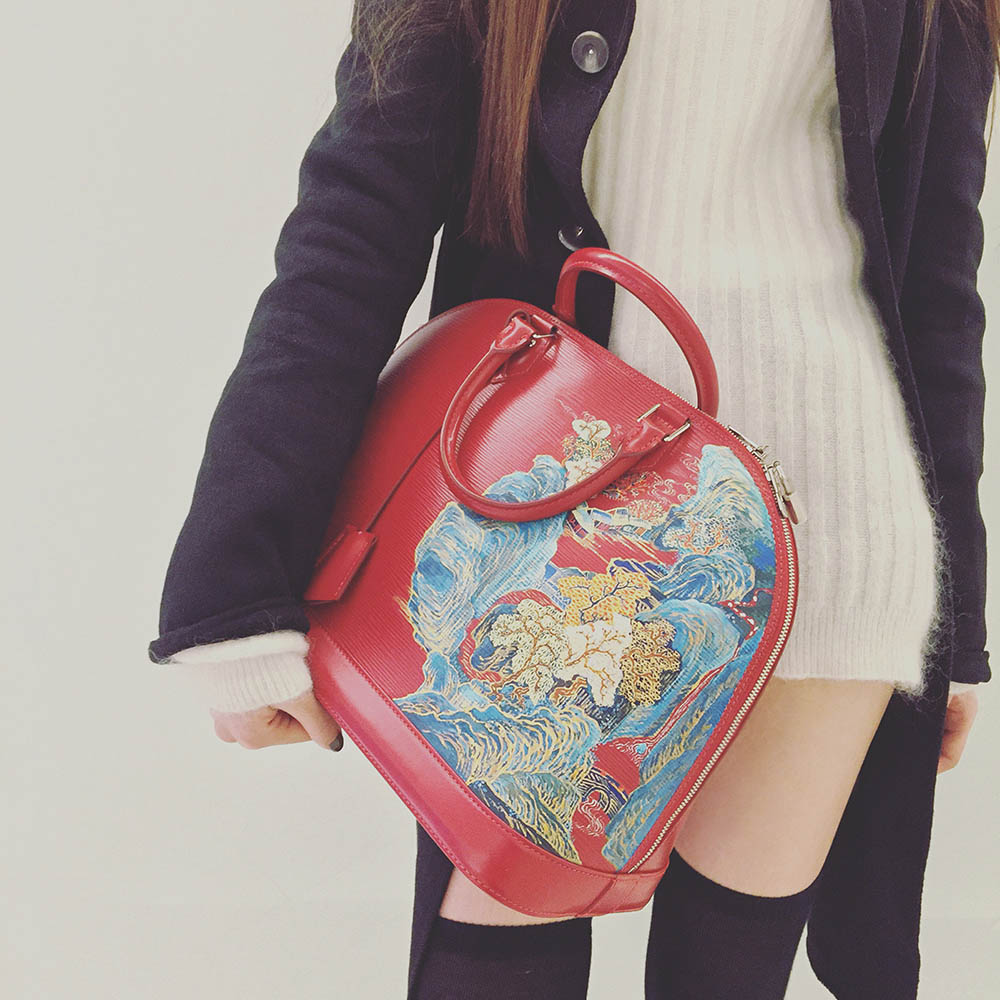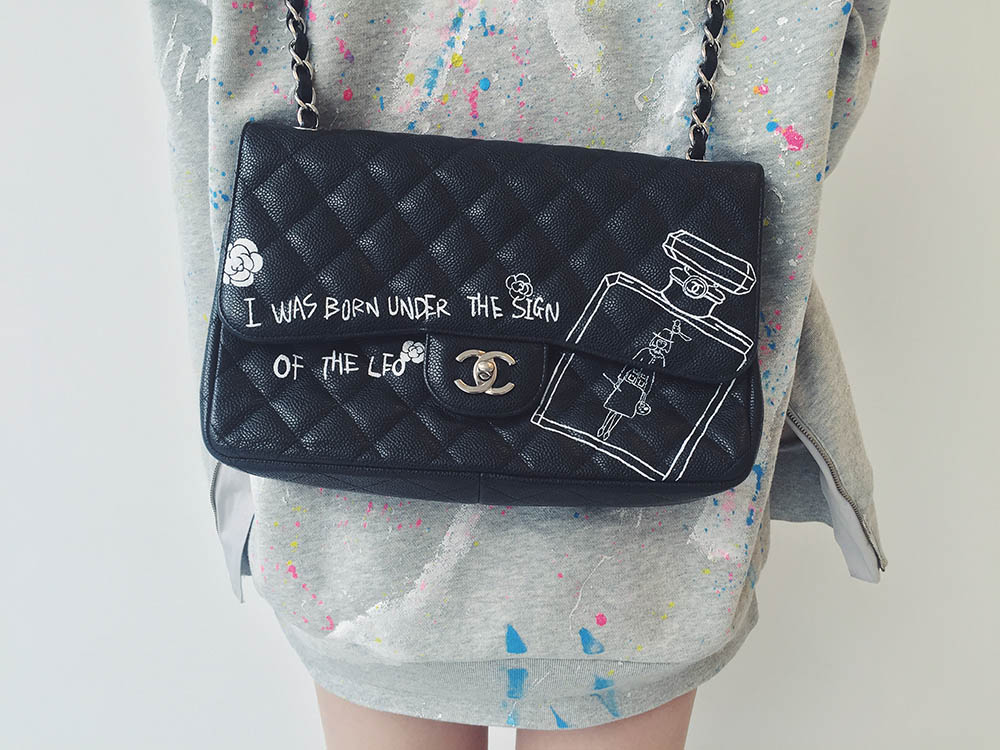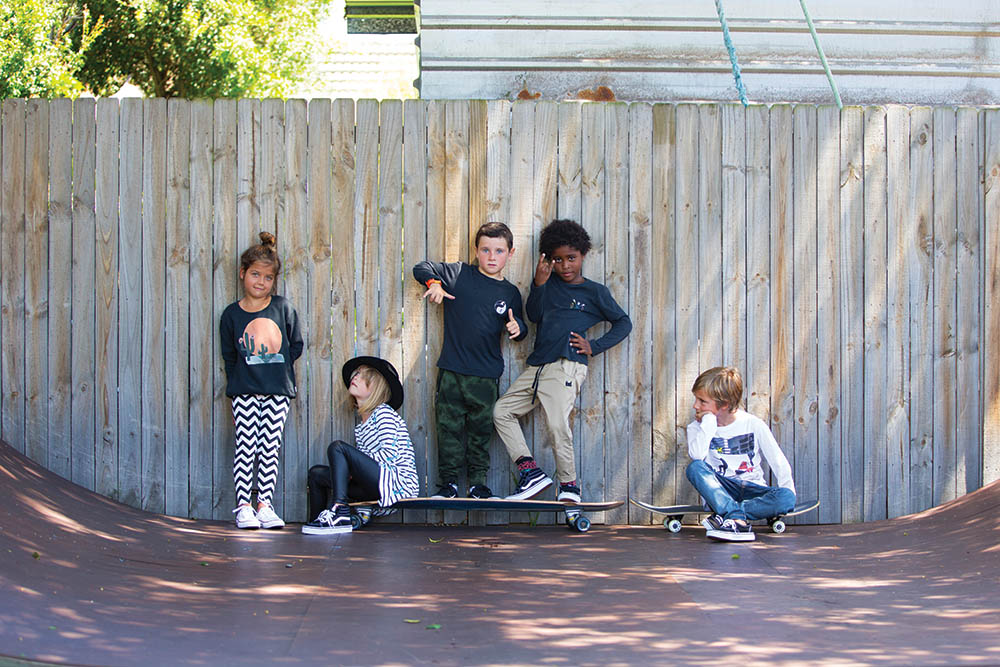



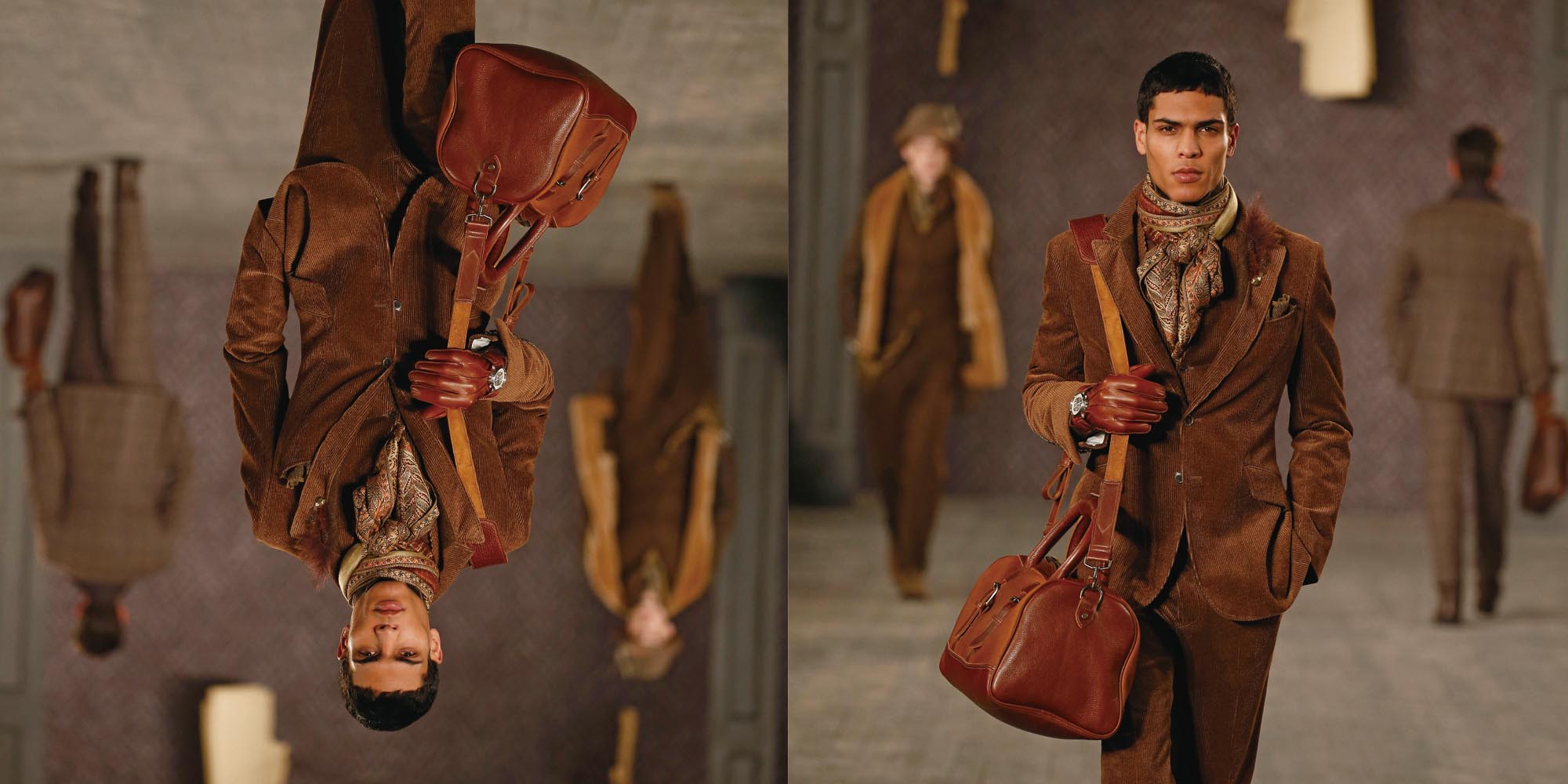
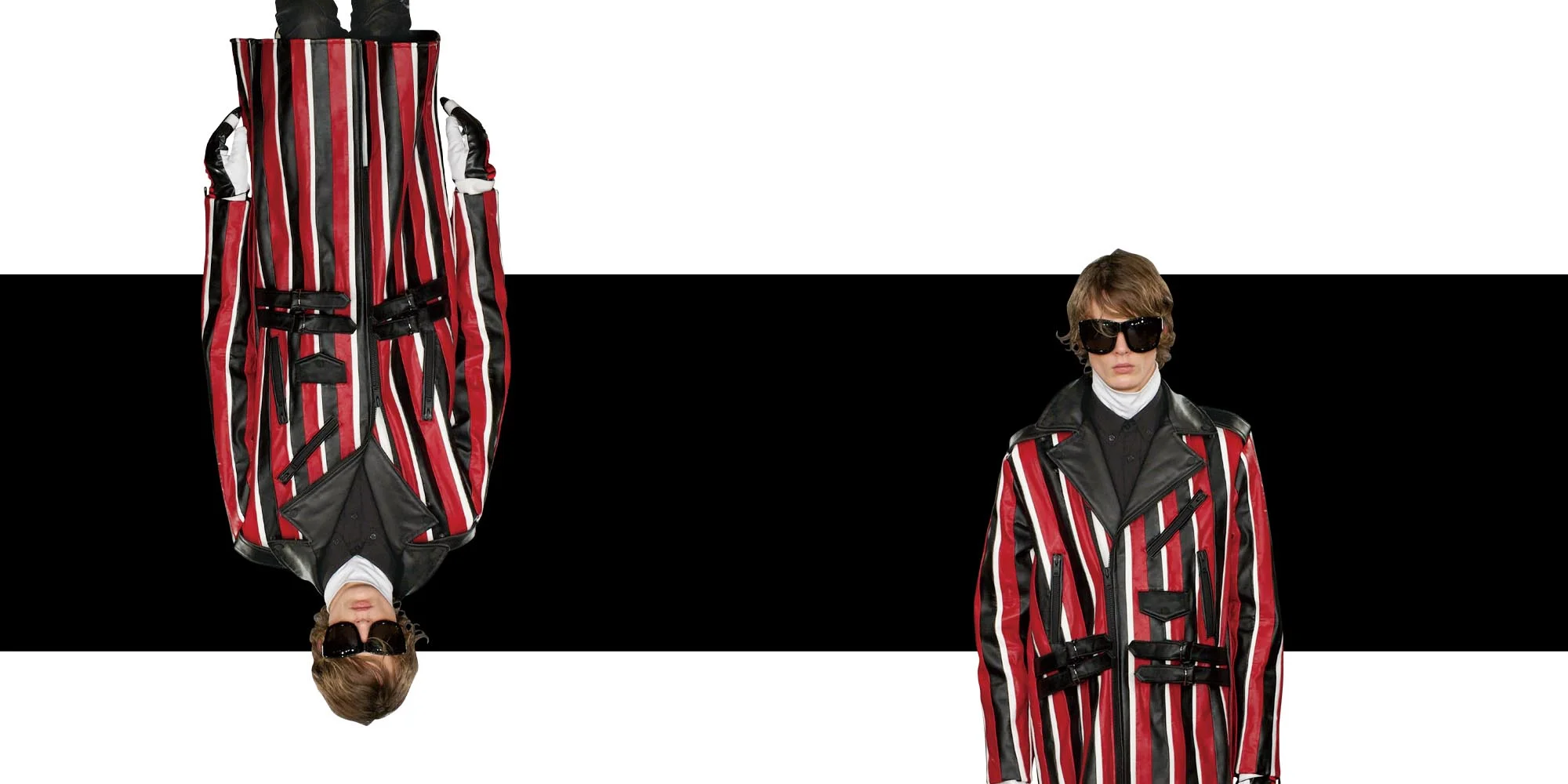


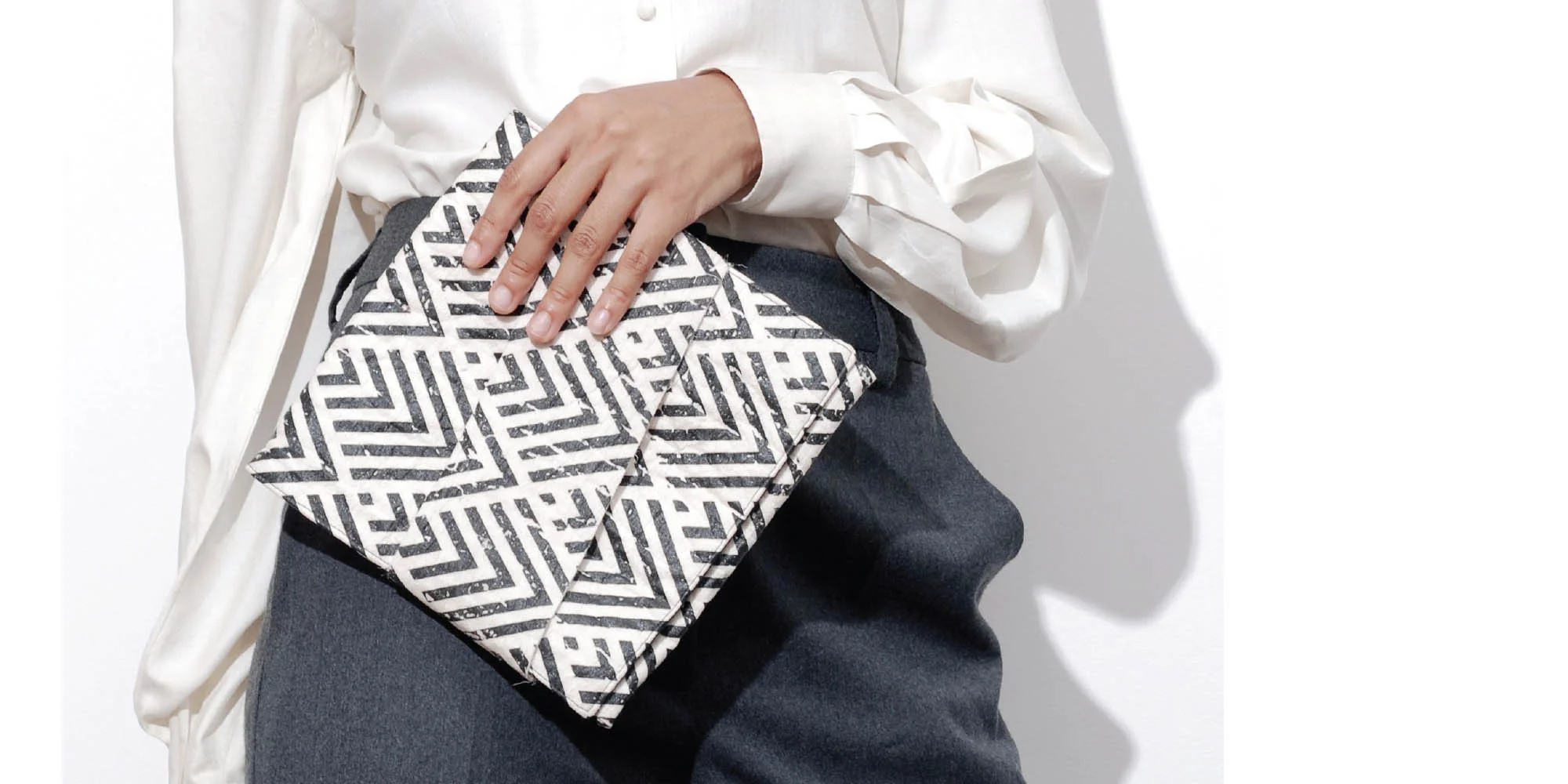

Fashion

Puppy Love
Pamper your pooch with the finest canine experiences and trends
Puppy Love
Pamper your pooch with the finest canine experiences and trends
Lifestyle > Fashion |
Puppy Love
October 28, 2016 / by Chris Campbell
For the ultimate shopping experience when you’re seeking that special gift for a loved one, there’s no city better than Hong Kong. Looking to buy a cute little silver pendant encrusted with Swarovski crystals? A pearl necklace? A day at the spa with aromatherapy massage and a mud wrap? A session with a hairstylist who specialises in the hottest new looks from Japan? Some sturdy boots for walking on rocky ground? Designer rainwear for those stormy days? A cooling mat to stretch out on when the floor is too hot? Yes, Hong Kong has it all for your beloved pet dog.
The love affair between humans and dogs goes back a long way. Scientists estimate that they first lived together around 15,000 years ago, and there is evidence that our ancient ancestors and their dogs were often buried side by side. Fantasy grooming became all the rage in France during the reign of Louis XVI in the 18th century, when poodles on the streets of Paris were clipped into decorative shapes to reflect the flamboyant style of the French court. Marie-Antoinette was a renowned dog lover – although it’s not known if she let her favourite papillon, Coco, eat cake.
Today, the cutting-edge trends in dog grooming primarily come from Japan. Angelia Leung of Hong Kong’s Hot Tails Salon recently trained in Tokyo; the shop offers a seemingly endless variety of styles that feature in the grooming magazines she brought back from her trip.
“In Japan, there is more attention to detail and there are so many styles; it’s crazy,” says Leung. “They make the hair curly with rollers or use colour highlights. They like the cut that makes the dog look like a teddy bear, the round ‘ball’ head look or the ‘up ear’ that makes the dog look like they are wearing headphones.” But it doesn't stop there. She adds, “They even give their dogs dreadlocks, which nobody wants to do here.”
Once your pooch has that killer new Japanese look, it’s time to add some bling. Philip Bell, the owner of Wagtrade Designs, which specialises in luxury dog blankets and dog jewellery, explains how it works. “It all fits around the neck,” he says, holding up a freshwater pearl necklace that is one of the company’s top-end products. “The idea is that you are trying to make the dog look good – but you have to look at dog safety as well, so no ankle bracelets or pierced earrings.” Wagtrade’s biggest international markets are the United States and the glitzy resorts along the French Riviera – Monaco, Nice and Cannes – where, he says, “there is a big dog culture and people spend money on their pets.”
Once your pet pooch is groomed and bejewelled, there’s no reason to stop there. If you want the cool look, a pair of 100%-UV-resistant Doggles will stylishly shade their eyes from the sun, a session of dog yoga will be good for their spiritual well-being, and a ride in a dog stroller will take the strain off those four legs at the end of a long day of walking.
Want to celebrate those memorable moments? Numerous specialist pet shops organise doggie birthday parties (called “barkdays”) and weddings (“puptials”). Hong Kong’s Wow Pet Shop has a smart reception hall for dog celebrations of all kinds – even providing wedding gowns and a mini-limousine for the big day when the happy couple tie the knot and the proud groom is invited to “lick the bride”.
And when the time comes to say goodbye, there are specialised funeral parlours where you can bid farewell. You can even have your doggie’s ashes encased in a stylish charm bracelet as a permanent keepsake. One such business in the US is aptly named Final Paws.
It might all seem over the top to non-dog-lovers, but the bond between human beings and their pets is particularly strong, as trainer Jonathan Klein explains from his office in Los Angeles. “Dogs have the keenest ability to read humans and read their body language,” he says. “They have had thousands of years of training to become close companions as well as working animals. I’ve seen a lot of people experience their first pet dog and the reaction is ‘Wow! I never knew that a dog could be a companion and a friend – and someone I would pour my heart out to.’”
Klein recently worked as an adviser for a TV shoot at a luxury pet store in LA, which boasted a champagne room for high-end customers. “This is where you buy a US$2,000 dog coat,” he recalls. “There are racks of clothes, crystal jewellery, fur – or, perhaps, make that faux fur. It was like being in Neiman Marcus.”
Putting the bling and all the other luxuries aside, what would really make a dog happy if you wanted to spoil him? “Dogs appreciate interaction with humans, whether it is retrieving or finding something that is hidden, or learning behaviour like giving paw,” he says. “Anything that you can teach the dog that lets them interact with you in a positive way is definitely the best treat.” ![]()
Images: Edmond Tang; Louise Weng; Getty Images
Back to top

Pet-a-Porter
From Karl Lagerfeld’s cat Choupette to Cara Delevingne’s rabbit Cecil, celebrity companions you need to know
Pet-a-Porter
From Karl Lagerfeld’s cat Choupette to Cara Delevingne’s rabbit Cecil, celebrity companions you need to know
Lifestyle > Fashion |
Pet-a-Porter
October 28, 2016 / by Emily Zhang
Karl Lagerfeld and his beloved cat, Choupette Lagerfeld
Lady Gaga and her French bulldog, Asia
They say that animals and children are the most difficult to work with on-camera – but these fashionista pets are clearly throwing that mantra out the window. No matter if it’s for a street shoot, a magazine cover, a product image or even on the runway, you’re bound to see their adorable faces somewhere these days. A few of these furry creatures have skyrocketed in social media circles and live a ridiculously glamorous lifestyle – they’re the fashion world’s It pets.
Read More
Neville Jacobs and his owner, Marc Jacobs
If you know of only one, it’s probably that white Birman cat, Choupette Lagerfeld. The pet and muse of renowned designer Karl Lagerfeld, her bio reads on her Instagram account (which has 88,000 followers): “I’m Daddy Karl Lagerfeld’s spoiled Chanel pussy, whose maids pamper her every need.” This couture kitty has her own bodyguard, personal medical consultant, personal chef and two maids at her service. She also has her own iPad and travels in a private jet, with possessions packed in her custom-made Louis Vuitton and Goyard trunks.
For Choupette, a fabulous life has gone much further. She has a book about her luxurious lifestyle; she inspired Karl to launch the Monster Choupette collection; she has her own make-up collaboration with Shu Uemura, called Shupette; she has modelled for German car brand Opel; and she has appeared on the cover of numerous fashion magazines in true A-list star mode.
If Choupette is the first It pet, then Neville Jacobs is the latest star. The four-year-old bull terrier is the beloved dog of Marc Jacobs and has nearly 200,000 followers on Instagram. Aside from his good taste and broad fashion sense on Instagram, he’s posed with supermodels such as Christy Turlington and Kendall Jenner, and has “worked” as a guest editor of Love magazine as well as a brand ambassador. Another celebrity dog living a fabulous life is Lady Gaga’s Asia. The adorable French bulldog wears luxurious pearls, travels in private jets, carries an Hermès bag and even drinks dog wine. She frequently accompanies Lady Gaga to big events and joined a fashion campaign for Coach.
Cara Delevingne and her rabbit, Cecil
It’s not all cats and dogs, of course. British supermodel Edie Campbell’s horse Dolly made her fashion debut with her owner in Lanvin’s autumn/winter 2014 campaign. Supermodel Cara Delevingne’s bunny rabbit Cecil is also a new power in the fashion world; she visited Mulberry’s headquarters, wears Chanel jewellery, works with Cara and has taken photos with every celebrity you could think of.
These pets might get famous because of their family connections, but there are many stars that work on their own. Among them is “number-one dog model” Bodhi – a five-year-old Shiba Inu dog who was an ambassador of Salvatore Ferragamo and Coach; he’s got his own website and Instagram as well as two full-time agents. And there’s Toast, the toothless dog who starred in eyewear extraordinaire Karen Walker’s summer 2015 campaign because of her good spirit, confidence and style. It’s not all smiles, though – take fashion icon Grumpy Cat, the four-year-old feline who became internet-famous for her “grumpy” facial expression; it soon developed into a lucrative career in the advertising, film and media industries.
Pets are not only our loyal companions and cuties at home; they’re also a rising force in the contemporary fashion scene.
![]()
Toast stars in a Karen Walker summer 2015 sunglasses ad campaign
Meet supermodel Bodhi, a Shiba Inu
Neville wears a fashionable scarf
Images: Instagram: @MenswearDog; @Choupettesdiary; @NevilleJacobs; @Missasiakinney; @Cecildelevingne; Karen Walker
Back to top

Arresting Looks
To protect and serve – and look good? Explore the street-patrolling style icons and the top designers who’ve dressed them
Arresting Looks
To protect and serve – and look good? Explore the street-patrolling style icons and the top designers who’ve dressed them
Lifestyle > Fashion |
Arresting Looks
September 30, 2016 / by Zhang Mengyi
Around the world, most police officers can be easily identified by their official uniforms. But while their outfits convey a unified message of power and authority, the styles and colours certainly vary from place to place.
One of the major turning points in the apparel of police officers was in 1829, when the London Metropolitan Police developed a paramilitary-style uniform for its “Bobbies” (the nickname for British police officers). To distinguish themselves from the British army in red and white, the London police decided to make the uniform dark blue. Later, other countries followed suit and the style was widely adopted around the world. In London today, police officers are dressed smartly in an open-necked tunic with a white collared shirt underneath.
Times have changed outfits, too. After the 1997 handover in Hong Kong, the police force’s iconic green uniforms were redesigned in blue by local firm G2000 in 2001 – the full outfit comprises staples including the navy blue jacket, as well as light blue and white shirts. In the US, powder-blue shirts with navy trousers were abandoned by the New York City Police Department in the mid-1990s for a look The New York Times described as “less Mr Goodwrench, more Terminator 2” – dark blue shirts with matching cargo trousers were used to present a tougher look.
Read More
Across Europe, many top fashion designers have created uniforms for police organisations. Paris has two national police forces in graceful blue uniforms: the Police Nationale and the Gendarmerie Nationale. Prominent designer Pierre Balmain created an American-esque uniform with a military-style peaked cap for France’s Police Nationale in 1985.
The Italian Carabinieri (the national gendarmerie of Italy, policing both military and civilian populations) have different types of uniforms, such as black apparel with a red stripe on the trousers and a dark blue one with silver braid around the collar and cuffs. Rumour has it that some of the designs came from top Italian fashion houses Valentino and Giorgio Armani.
The Russian police have also worked with top designers, though not always to success. Renowned fashion designer Valentin Yudashkin created a dark blue look with red trimming on the sleeves, pockets and lapels in 2010. Unfortunately, the good-looking outfits turned out to be a disaster – they just couldn’t stand up to Russia’s cold temperatures and ripped apart very quickly.
The majority of police uniforms are produced in darker hues such as blue, black, brown, green and grey. There’s a psychological reason – these colours are associated with security, power and strength. But there are certainly exceptions. For example, the North-West Mounted Police of Canada wear a uniform including a red jacket, dark trousers and high-top riding boots.
The uniform functions like other clothes – as an extension of who you are, revealing your social status and influencing the way people perceive you. For the police, functionality always comes before fashion. But looking at some of these charming cops, you wouldn’t be faulted for thinking that a routine patrol could easily be turned into a fashion runway.
![]()

Tailored Approach
Mark Frost, design director of Gieves & Hawkes, on his experience thus far with the heritage brand, the perception of the bespoke tailoring tradition and the inspiration behind the autumn/winter 2016 collection
Tailored Approach
Mark Frost, design director of Gieves & Hawkes, on his experience thus far with the heritage brand, the perception of the bespoke tailoring tradition and the inspiration behind the autumn/winter 2016 collection
Lifestyle > Fashion |
Tailored Approach
September 30, 2016 / by China Daily
Mark Frost
What sparked your interest in fashion?
I’ve always been excited to wear things that were a bit different from other people. It took me a little while to realise that it could evolve into fashion design, rather than just having my own sense of style. I’d always been interested in music and film when I was a kid, and the styles of people in that world always intrigued me. I think that’s where my interest in fashion came from.
How did the story between you and Gieves & Hawkes begin?
Before Gieves & Hawkes, I was with Hackett and Tom Ford. Hackett is very British and Tom is inspired by British styling. It seemed a great opportunity to work for one of the most famous brands on Savile Row – so about four years ago I started at Gieves & Hawkes, with lots happening and lots of change. It’s really exciting to be able to build on a brand that has so much heritage, but is able to make something fresh and new.
You were appointed as design director in April. What’s the biggest challenge you’ve faced so far?
I think the biggest challenge is to understand the different marketplaces where we feature. Obviously China is our biggest market. Being a British heritage brand, though, our challenge is probably to translate British-feeling products into those that are suitable for marketplaces in the rest of the world.
Read More
In 2010, Prince William wore a dark navy suit by Gieves & Hawkes for his engagement announcement
Gieves & Hawkes has a very long history. How do you aim to modernise the brand while staying true to its rich heritage?
I think it’s about understanding customers’ needs – the way we live now is evolving constantly. So it’s about taking the things we’ve always done well and translating that into products that feel more relevant for today’s consumers. Part of it is being confident and sticking to what you do best – that will never go out of style.
How do you plan to translate the products and help people understand the history?
Well, understanding the heritage is one thing. We can try to create dreams and paint pictures to express our own heritage. But translating the product is a different question entirely. For example, we use lots of heavyweight dry-handle cloth, which tailors very nicely. But I think it doesn’t translate very well for markets here [in Asia] because the weather is a bit warmer. It’s just not in the mindset of customers. So it’s about accepting the fact that we create a British-inspired look, and use cloth or techniques to fit what we think will help the customers feel like they’re part of the British heritage world while maintaining the functionality.
Can you tell us about the autumn/winter 2016 collection?
As a brand, we really try to communicate our British heritage – and we need to make sure it’s modern and relevant for customers globally. This collection is based on the idea of country walking in the UK. It has a kind of traditional country feeling, but brings luxury and elegance. The idea is that if you’re in a cold climate, when you’re walking, you’re going to feel warm and comfortable.
Behind the scenes of a photo shoot for the brand’s autumn/winter 2016
Who is the Gieves & Hawkes man?
I think the ideal Gieves & Hawkes men are confident, elegant and sophisticated. For me, confidence is really a big part of everything we do.
What do you think about the bespoke tradition in today’s world, where trends and the way we live is always undergoing significant change?
Bespoke is something I’m very passionate about. When you’re actually on Savile Row, you feel the history as you walk along the street – you feel that romance of bespoke tailoring. I think it still holds importance with regards to the traditions of producing any garments, whether factory-made or handmade. I think bespoke always has a customer base. There are a lot of clients who are very much in love with the process and some who are new to it, who want to experience the best and get something personal.
What are you fascinated by at the moment and how does it feed into your work?
I always try to maintain a broad spectrum of references. Maybe the one thing I’m enjoying at the moment is people who feel like they have their own real sense of style, who aren’t frightened to express themselves in a way that may feel more exaggerated than styles they had tried in the past.
The map room and library in No. 1 Savile Row, 1900 as drawn by Edward Whymper
What’s your personal style when you’re not working? Do you wear jeans?
I like to keep it simple. Sometimes I don’t mind being a little bold and unexpected, but I’m always in tailored trousers. I’ve recently stopped wearing jeans. I used to wear jeans when I was a bit younger, but now I’m able to experiment with tailoring a bit more and am enjoying the ability to wear it in different ways.
What are three words you’d use to describe yourself?
Relaxed, confident and inquisitive.
If you could dress any man, who would it be?
I think Gieves & Hawkes have been very lucky to dress a lot of famous people over the years. Obviously we have our royal connections, which are very important to us. In the modern market, maybe it’d be someone like Eddie Redmayne, the young British actor who won the Oscar.
What would you select for him?
I would definitely choose a suit – a more elaborate, bold suit, or something a little more eccentric and British, because he is a very British character. ![]()

Joseph Abboud
In a tribute to American craftsmanship and tailoring, the critical darling put forth a classic collection
Joseph Abboud
In a tribute to American craftsmanship and tailoring, the critical darling put forth a classic collection
Lifestyle > Fashion |
Joseph Abboud
September 30, 2016 / by China Daily
Certainly not trying to force any of-the-moment fashion trends, Lebanese-American fashion designer Joseph Abboud’s autumn collection paid homage to American craftsmanship and tailoring. With his bespoke layered scarves, he used the traditional hues of grey and brown to elaborate on classic men’s patterns, including pinstripes, tweeds and embellished paisleys. The collection reflected the brand’s signature rugged dandyism, combined with a delicate balance of textures and motifs. ![]()

KTZ
Top London brand takes it to the streets with an array of sportswear-influenced looks
KTZ
Top London brand takes it to the streets with an array of sportswear-influenced looks
Lifestyle > Fashion |
KTZ
September 30, 2016 / by China Daily
The renowned London-based high-street brand KTZ always brings a touch of couture to its offerings. This time around, it featured everything sporty in its stylish men’s ready-to-wear collection for autumn 2016. The silhouette of baseball-style tour jackets came in a versatile array of reflections, speaking volumes about Macedonian designer Marjan Pejoski’s boyhood inspiration. Elements including preppy stripes, brushed wool and laced panels all helped reinforce the baseball aesthetic. Beyond the diamond, leather coats with slogans made reference to the world of motor racing. All the sportswear features brought a vibe that was equal parts chic and intimidating.
![]()

Make Your Mark
Customisation creates a fun handbag with a look that’s uniquely yours
Make Your Mark
Customisation creates a fun handbag with a look that’s uniquely yours
Lifestyle > Fashion |
Make Your Mark
August 26, 2016 / by Zhang Mengyi
With the rise of leisure travel in 19th-century Europe, luggage personalisation became a popular way to mark ownership via a series of names, initials, numbers or stripes. Luxury brands such as Louis Vuitton, Goyard and Burberry pioneered this craft and continue to carry on the tradition today. For the younger generation of luxury consumers in China, however, the art of personalisation is just starting to take off.
“Luxury customisation has just started in China,” says Liu Yuchen, the founder of Beijing-based design studio Yunzhu, which focuses on customising luxury bags. “A good economic environment, solid sales results and the maturity of customers’ understanding of the essence of luxury has driven many brands to start customising their products here.”
Liu worked at Louis Vuitton for five years as an artisan for the brand’s customisation service. When luxury sales in China started to decline, he saw an opportunity to start his own company. With the encouragement of his boss, he opened Yunzhu with a business partner.
As China’s consumer market is being reshaped by younger, more sophisticated shoppers, luxury goods are increasingly seen as a source of enjoyment, rather than a flashy symbol of wealth and status. In terms of customisation, global luxury giants tend to take more cautious steps than start-ups – considering the potential costs of hiring a local design team and the risks of conveying the wrong brand message. “At Louis Vuitton, it’s limited to the more traditional customisation styles, such as initials and stripes,” says Liu.
Read More
By making use of new-media channels, Liu says he has attracted more than 10,000 potential customers since last year. “My former company introduced some customers to me, but most of them came from social media.” With each piece of work taking about seven to 15 working days, Liu’s customisation projects vary widely, from cartoon images and personal portraits to art paintings. “The most important thing is to have a good base of knowledge about the different types of bag materials,” he says.
Instead of a design that Liu’s team suggests, some of his customers bring their own ideas – and sometimes they’re just a bit too wild. “A customer once asked us to paint a traditional Chinese double-dragon play bead on his black Louis Vuitton Keepall Bandoulière,” Liu recalls. “I’m familiar with that design, but it doesn’t work for the bag’s style.”
Customisation appears to be a global phenomenon, too. Boyarde Messenger is another in-demand artist who has made headlines for her hand-painted luxury bags, gaining her clients from all around the world, and Kim Kardashian showed off a pricey Hermès bag with her daughter’s painting on it. As more and more consumers want to showcase their individuality on their bags, it seems that imagination is the only limit.
![]()
Images: Yunzhu Design Studio
Back to top

Free to Be Me
Flapper girls led the march to liberty in the frenzy of the 1920s
Free to Be Me
Flapper girls led the march to liberty in the frenzy of the 1920s
Lifestyle > Fashion |
Free to Be Me
August 26, 2016 / by Zoé Manset
Actress Joan Crawford in 1924
Josephine Baker in her “banana costume”
The onset of war in Europe (1914-18) a century ago was a landmark moment in women’s history. With men going off to fight, more than one million women began working for the first time and gained new responsibilities. Society began transforming and, in the war’s aftermath, the social codes changed. So, too, did attitudes and behaviour, along with new modes of dressing and style.
Women in the West wanted to live and enjoy life as dancers, actresses, writers, party girls, thinkers and even models. Whether it was through their intellectual emancipation or their shockingly loud attitude, they had a shared goal. Women began to enjoy the pleasures offered by a man-made society, which had been created solely for men’s delight.
Paris was the epicentre for much of this evolution. By the early 1920s, artists, aesthetes and socialites flourished, and female cultural influencers shaped the growing trends. Common to all was the need to affirm their individuality through different means – the most obvious one being style.
Read More
Dancing flapper girls
With her sparkle and talent, Josephine Baker offered her own interpretation of feminine identity to the eyes of bewildered crowds – by performing practically nude on the stage of a famous Parisian cabaret. The flippancy of her extravagant costumes made her the first widely recognised black performer in the Western world. By choosing to reveal parts of her body and covering the rest in sequins and glitter, she opened the door to a new wave of entertainment – and, specifically, to women’s control of this form.
Above the intellectual and artistic liberation triggered by the works and ideas of strong-willed women, social emancipation was central to the fashion of the roaring twenties.
Dancing on tables, riding on taxi roofs or indulging in endless night follies were among the things that caused writer F Scott Fitzgerald to call his wife, Zelda, “the first flapper”. The famous silhouette of the flapper – her low-waisted knee-length dress hanging loosely as she nonchalantly smokes a cigarette, with the beads, sequins and feather fringes of her top intertwining in the most gracious manner – was the result of this quest for women’s independence. Though expressed through different means, these needs for liberation and emancipation all had in common an unconventional and even revolutionary approach to femininity and fashion, which remains iconic today.
Dramatically yet interestingly opposed to today’s feminist standards, the flappers chose to redefine femininity – and thereby eroticism. Instead of putting the focus on their breasts or overall body shape, an act that had always been associated with beauty as it was perceived by men, they opted for a slender and lithe silhouette that revealed their arms and legs. By adopting a rather androgynous allure – a look called “garçonne” that was adopted by Coco Chanel – they took ownership of specific masculine characteristics, which then enabled them to find their own legitimacy in enjoying the most basic pleasures of life.
Next time we sucumb to the delight of sipping a softly coloured cocktail in a comfortably fitting dress, let us not forget the memory of our fierce flappers.
![]()
Images: Getty Images
Back to top
Gertrude Stein and her life partner, Alice B Toklas, walking their dog

How Sweet it Is
Innovative and environmentally friendly, the pineapple leaf-based Piñatex is set to change the world of textiles
How Sweet it Is
Innovative and environmentally friendly, the pineapple leaf-based Piñatex is set to change the world of textiles
Lifestyle > Fashion |
How Sweet it Is
August 26, 2016
The global fast-fashion industry has long been criticised for its high levels of waste, as trends change every season. Naturally, sustainability in design has come to the fore. Numerous entrepreneurs have been hunting for versatile, innovative textiles that can provide a necessary alternative to traditional materials. One such person is Spanish designer Carmen Hijosa,
who uses fibres made of pineapple leaves to create Piñatex, an environmentally friendly material.
The idea for Piñatex was inspired by the barong tagalog – a traditional shirt long considered the national dress of the Philippines, which is woven with fibres of pineapple leaves. After working in the traditional leather industry for many years, Hijosa decided to set out to create a sustainable natural textile. In 2013, at the age of 63, she founded Ananas Anam to introduce her game-changing product to the broader fashion industry.
Read More
“We can make shoes, we can make bags. We can make chairs, sofas. It can be panelling. Eventually, it can be made into the interiors of cars, even linings,” said Hijosa in an interview with The Guardian. Today, Piñatex has gained rising popularity among many big-name brands, including Puma and Camper.
Piñatex Original comes in charcoal, natural and brown hues, while the newest offering from Ananas Anam is Piñatex Oro, which currently comes in gold and aims to expand into other metallics. They all look like real leather and are even better in terms of eco-friendliness; the fibres are the by-products of the pineapple harvest, which means they don’t require extra land, water or fertiliser.
Will Piñatex eventually challenge the current textile market? According to Ananas Anam’s website, one of the brand’s aims is “to bring onto the market a new and sustainable textile that can fill the gap between leather and petroleum-based textiles, and that is good value for money.” Only time will tell, but we get the feeling it’s just a matter of time before Piñatex brings its sweet touch to fashionistas the world over.
![]()

Growing Up Fast
For the children, fashion isn’t just about functionality or comfort – playfulness sometimes leads the way, too
Growing Up Fast
For the children, fashion isn’t just about functionality or comfort – playfulness sometimes leads the way, too
Lifestyle > Fashion |
Growing Up Fast
August 26, 2016
Fendi Kids (AW16/17)
Style isn’t just for mum and dad anymore – this season, you can let your child’s fashion streak run wild, too. Danish brand Popupshop’s unisex collection comes to life with nature-inspired prints including wild animals and fruit, while Belgium’s Bellerose Kids uses customised denim with teddy fur in a variety of ways. Italy’s Hitch-Hiker showcases a versatile wardrobe with a blend of natural, military and urban chic, and Fendi Kids features colourful and playful prints that elaborate on a fun, modern look. Another brand from Italy, Maëlie, emphasises a metropolitan style for urban-dwelling girls, while Australia’s Munsterkids adheres to the rules of street style. Years later, when you’re flipping through photo albums together, your children will thank you for your stylish influence.
![]()

















![Normal
0
10 pt
0
2
false
false
false
EN-US
ZH-CN
X-NONE
$([{£¥·‘“〈《「『【〔〖〝﹙﹛﹝$(.[{£¥
!%),.:;>?]}¢¨°·ˇˉ―‖’”…‰′″›℃∶、。〃〉》」』】〕〗〞︶︺︾﹀﹄﹚﹜﹞!"%'),.:;?]`|}~¢
<w:LatentStyles DefLockedState…](https://images.squarespace-cdn.com/content/v1/5672361ad8af10a9410683b3/1475246627306-MIXV5XBLAHSAKFPGO68G/image-asset.jpeg)
![Normal
0
10 pt
0
2
false
false
false
EN-US
ZH-CN
X-NONE
$([{£¥·‘“〈《「『【〔〖〝﹙﹛﹝$(.[{£¥
!%),.:;>?]}¢¨°·ˇˉ―‖’”…‰′″›℃∶、。〃〉》」』】〕〗〞︶︺︾﹀﹄﹚﹜﹞!"%'),.:;?]`|}~¢
<w:LatentStyles DefLockedState…](https://images.squarespace-cdn.com/content/v1/5672361ad8af10a9410683b3/1475246733948-5YQFP6EFM7SEC1XWMOUH/image-asset.jpeg)

![Normal
0
10 pt
0
2
false
false
false
EN-US
ZH-CN
X-NONE
$([{£¥·‘“〈《「『【〔〖〝﹙﹛﹝$(.[{£¥
!%),.:;>?]}¢¨°·ˇˉ―‖’”…‰′″›℃∶、。〃〉》」』】〕〗〞︶︺︾﹀﹄﹚﹜﹞!"%'),.:;?]`|}~¢
<w:LatentStyles DefLockedState…](https://images.squarespace-cdn.com/content/v1/5672361ad8af10a9410683b3/1475247148976-LUMQKPZD8MSNLEM0SSN7/image-asset.jpeg)




